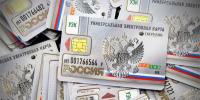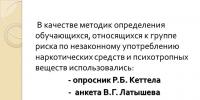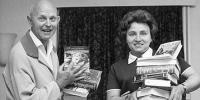Posters of the Great Patriotic War. Posters of the Great Patriotic War Posters of the Patriotic War
The Great Patriotic War poster is one of the most memorable and striking artistic cultural events of the twentieth century. Its persuasiveness and high patriotic pathos are largely explained by the professionalism of Soviet poster artists, their extensive life experience and ability to speak clearly using poster graphics. Today, decades after its creation, the poster of 1941-1945 remains an ageless art, sharp, combative and conscript.
V. Koretsky (1909-1998). Our strength is incalculable. M., L., 1941.
V. Koretskii (1909-1998). Our forces are numberless. Moscow, Leningrad 1941.
2. I. Toidze (1902-1985). The Motherland is here! M., L., 1941. 
Toidze (1902-1985). Your Motherland needs you! Moscow, Leningrad 1941.
3. V. Koretsky (1909-1998). Be a hero! M., L., 1941. 
V. Koretskii (1909-1998). Be a Hero! Moscow/Leningrad 1941.
4. V. Pravdin (1911-1979), Z. Pravdin (1911-#980s). Youth, go to battle for the Motherland! M., L., 1941. 
V. Pravdin (1911-1979), Z. Pravdina (1911-1980s). Young people, to the battle for the Motherland! Moscow, Leningrad 1941.
5. V. Serov (1910-1968). Our cause is just—victory will be ours. L., M., 1941. 
V. Serov (1910-1968). Our cause is just. We'll win the victory. Leningrad, Moscow 1941.
6. N. Zhukov (1908-1973), V. Klimashin (1912-1960). Let's defend Moscow! M., L., 1941. 
N. Zhukov (1908-1973), V. Klimashin (1912-1960). We'll defend Moscow! Moscow, Leningrad 1941.
7. V. Koretsky (1909-1998). Red Army warrior, save me! M., L., 1942. 
V. Koretskii (1909-1998). Red Army warrior, help! Moscow, Leningrad 1942.
8. N. Zhukov (1908-1973). Something to drink to! M., L., 1942. 
N. Zhukov (1908-1973). There is something to toast to! Moscow, Leningrad 1942.
9. V. Koretsky (1909-1998). Samed goes to his death so that Semyon does not die... M., L., 1943. 
V. Koretskii (1909-1998). Sahmed would sacrifice his life to save Semyon/ As Sahmed’s life is what Semyon had fought for. / Their password’s “Motherland” and “Victory”’s their motto! Moscow, Leningrad 1943.
10. V. Ivanov (1909-1968). We drink the water of our native Dnieper... M., L., 1943. 
V. Ivanov (1909-1968). We drink the water of Old Father Dnieper. We’ll drink from the Prut, the Neman and the Bug! Let’s wash the fascist filth off the Soviet land! Moscow, Leningrad 1943.
11. V. Ivanov (1909-1968). To the west! M.,L., 1943. 
V. Ivanov (1909-1968). Go West! Moscow, Leningrad 1943.
12. V. Koretsky (1909-1998). Hit like this: no matter what the cartridge, it’s the enemy! M., 1943. 
V. Koretskii (1909-1998). Shoot like that! Every bullet means the murdered enemy! Moscow 1943.
13. N. Zhukov (1908-1973). Strike to death! M., L., 1942. 
N. Zhukov (1908-1973). Shoot to kill! Moscow, Leningrad 1942.
14. N. Zhukov (1908-1973). A German tank won't get through here! 
M., Leningrad, 1943. N. Zhukov (1908-1973). No way for German tanks! Moscow, Leningrad 1943.
15. A. Kokorekin (1906-1959). When an armor piercer stands in the way... M., L., 1943. 
A. Kokorekin (1906-1959). When our armor-piercing trooper is on the way/The fascist tanks will never pass! Moscow, Leningrad 1943.
16. V. Denis (1893-1946), N. Dolgorukov (1902-1980). Stalingrad. M., L., 1942. 
V. Deni (1893-1946), N. Dolgorukov (1902-1980). Stalingrad. Moscow, Leningrad 1942.
17. V. Ivanov (1909-1968). You gave us life back! M., L., 1943. 
V. Ivanov (1909-1968). You saved our lives! Moscow, Leningrad 1943.
18. L. Golovanov (1904-1980). Let's get to Berlin! M., L., 1944. 
L. Golovanov (1904-1980). Well reach Berlin! Moscow, Leningrad 1944.
19. V. Ivanov (1909-1968). You will live happily! M., L., 1944. 
V. Ivanov (1909-1968). You will live a happy life! Moscow, Leningrad 1944.
20. A. Kokorekin (1906-1959). To the victorious warrior - nationwide love! M., L., 1944. 
A. Kokorekin (1906-1959). Nation-wide love to Warrior the Winner! Moscow, Leningrad 1944.
21. N. Kochergin (1897-1974). Soviet land has been finally cleared of Nazi invaders! L., 1944. 
N. Kochergin (1897-1974). The Soviet land is completely clear of the german fascist invaders! Leningrad 1944.
V. Klimashin (1912-1960). Long live the warrior who won victory! Moscow, Leningrad 1945.
24. L. Golovanov (1904-1980). Glory to the Red Army! M., L., 1946. 
L. Golovanov (1904-1980). Long live the Red Army! Moscow, Leningrad 1946.(FROM THE INTERNET)
In Soviet times, posters were one of the most common means of mass propaganda. With the help of posters, talented artists expressed the will of the people, called for certain actions, pointed out the good and bad sides of life, and instilled in people self-esteem, a sense of patriotism and love for their country, their people. Posters from the times of the USSR touched on a variety of aspects of life and affected almost everything that happened in society. Over the entire period, a gigantic number of posters have been created that condemn drunkenness, talk about the benefits of work and sports, show life in Russia in a good light and point out the shortcomings of the West. However, the brightest, most important, deep, touching and even tragic posters are from the times of the Great Patriotic War.
Soviet posters of the times Great Patriotic War 1941-1945 calling on all people of the vast country to oppose fascism. In the most vivid and graphic images they show all the horror of war and all the inhumanity of fascism, which decided to conquer the world. During the war, posters were one of the mass motivating means of propaganda, acting on a par with newspapers and radio. Many of these posters became so famous that they are still used today and are considered true masterpieces of poster art. These posters can touch the heart and awaken special feelings even now, when many decades have passed since that terrible war that claimed the lives of millions of soldiers and civilians.
The creation of propaganda posters was carried out by talented artists, whose names remained in the history of fine art of the Soviet period. The most famous artists of this genre were Dmitry Moor, Victor Denis, Mikhail Cheremnykh, Toidze Irakliy Moiseevich, Kokorekin Alexey Alekseevich, Ivanov Viktor Semenovich, Koretsky Viktor Borisovich, the group of artists "", the group of artists "TASS Windows" and others. In their art, they created majestic, memorable and inspiring images, an intense plot that appealed to sincere feelings, and also accompanied their works with vivid phrases that were remembered and etched in the memory. Without a doubt, the art of propaganda posters contributed to the formation of a sense of patriotism in the people of that time, because it was not without reason that propaganda and agitation were then called the third front of the Great Patriotic War.















Do you want to make your home, country house, cottage more beautiful, stylish, modern and reliable? Custom-made artistic forging in Moscow is exactly what you need. Forged furniture, interior items, fences, gates, wickets and much more.
During the war, posters were the most accessible form of fine art. Capacious and clear, it reflected the whole essence at once.
The posters strengthened the morale of the soldiers. They appealed to conscience and honor, courage and bravery. And after many years, people far from the war, when looking at the image, do not have to think for long about the meaning of what was drawn.The so-called TASS Windows were especially popular. These are posters that were replicated by hand by transferring images using stencils, and were aimed at raising the morale of soldiers and performing feats of labor by the population. This type of campaigning made it possible to instantly respond to current events. The images were more colorful than printed posters. When working with Windows, contrasting colors and short, sharp phrases were used that “hit like shells.”
The poster art of the Great Patriotic War featured several popular motifs.
The first motive is Until the last bullet! They urge you to stand to death, save your ammunition, and shoot straight at the target. Because it is known for certain that metal for weapons was obtained with great difficulty from home front workers. Most often, the central figure on such posters was the personality of the fighter, whose facial features were etched in the memory for a long time.
Another popular call was “ Attack!" Posters with this motif depicted military equipment - the T-35 tank, airplanes, Pe-2. Sometimes legendary heroes, generals of past years or heroes were depicted.
Also common was the motive about fighter, wincurrentenemy in hand-to-hand combat. On these posters, the Red Army soldier was depicted as red, and the fascist as gray or black.
Widely known use caricatures in posters. Sometimes not only the enemy himself was ridiculed, but also the destructiveness and inhumanity of his actions. It is noteworthy that the artists who worked on the image always very accurately noted the character, habits, gestures, and distinctive features of the characters depicted. Such a subtle impact on people’s souls through a poster required not only long, painstaking work studying German newsreels, photographs of Hitler, Goebbels, Goering, Himmler and others, but also the skill of a psychologist.
No less popular was the motive Death to child killers. Such posters usually depicted the suffering or death of children, and called for help and protection.
Motive Do not chat! called on the local population to be vigilant.
There was a call to the population to collect scrap metal, to work without absenteeism, to harvest to the last grain, to bring victory closer with every blow of the hammer.
When it comes to posters, paintings and images, it is better to see once than to read their description a hundred times. We bring to your attention the most famous posters from the Great Patriotic War of 1941-1945.
Posters of the Great Patriotic War 1941-1945.
Text on the poster: Conquer the world! Bondage to the peoples! - Fascist rate. Red Army amendment!
Artist, year: Victor Denis (Denisov), 1943
Main motive: caricature
Brief explanation: Hitler's overconfidence was ridiculed. They tried to remove fear of the enemy from the Red Army soldiers by portraying Hitler as funny and absurd.

Text on the poster: Take revenge!
Artist, year: Shmarinov D., 1942
Main motive:Death to child killers
Brief explanation:The poster raises the topic of the suffering of Soviet citizens in the occupied territories. The poster shows a full-length image of a woman holding her murdered daughter in her arms. The suffering and grief of this woman is silent, but so touching. In the background of the poster there is a glow from the fire. One word “Take revenge” raises a storm of indignation and anger towards the fascist barbarians.

Text on the poster:Dad, kill the German!
Artist, year: Nesterova N., 1942
Main motive:Death to child killers
Brief explanation:The poster depicted the suffering of the people in the occupied territories.He aroused fierce hatred towards the enemy who encroached on the most sacred things - women and children.The slogan on the poster was based on a phrase from Konstantin Simonov’s poem “Kill him!”

Text on the poster:Hit like this: no matter the shell, it’s a tank!
Artist, year: V.B. Koretsky, 1943
Main motive:Until the last bullet!
Brief explanation:The poster encourages soldiers to improve their combat skills.

Text on the poster:A fighter who finds himself surrounded, fight to the last drop of blood!
Artist, year: HELL. Kokosh, 1941
Main motive:A fighter defeating the enemy in hand-to-hand combat
Brief explanation:They called upon us to stand to the death, to fight with all our might.

Text on the poster:Death to the Nazi invaders!
Artist, year:N.M. Avvakumov, 1944
Main motive: Attack!
Brief explanation:The poster called on the soldiers to selflessly go into battle, attack . In the background are tanks and planes that are rapidly rushing into battle against enemies. This is a kind of symbol of the fact that all forces are concentrated in the fight against the Germans, that all military equipment follows the Soviet soldier into battle, instilling fear in the fascists and confidence in the Soviet soldiers.

Text on the poster:This is what the German beast looks like now! So that we can breathe and live and finish off the beast! (on the drum - lightning war, behind the belt - the extermination of the Slavs, on the flag - total mobilization)
Artist, year: Victor Denis (Denisov), 1943
Main motive: Caricature
Brief explanation:The artist caricatures a ragged, tortured German beast. The beaten German can see all his slogans with which he so arrogantly attacked Russia. The author, making the German funny and pitiful, tried to add courage and remove fear from the soldiers.

Text on the poster:To Moscow! Hoh! From Moscow: oh!
Artist, year: Victor Denis (Denisov), 194 2
Main motive: Caricature
Brief explanation:The poster is dedicated to the Great Battle of Moscow and the failure of the plan for a lightning war (Blitzkrieg).

Text on the poster:The Motherland is calling! (Text of the military oath)
Artist, year: I. Toidze, 1941
Main motive: Attack!
Brief explanation: Artist r It lays out a complete monolithic silhouette on the plane of the sheet, using a combination of only two colors – red and black. Thanks to the low horizon, the poster is given a monumental feel. But the main force of influence of this poster lies in the psychological content of the image itself - in the expression of the excited face of a simple woman, in her inviting gesture.

Text on the poster:Do not chat! Be on alert, on days like these the walls listen. Not far from chatter and gossip to betrayal.
Artist, year: Vatolina N., Denisov N., 1941
Main motive: Do not chat!
Brief explanation:Just before the start of the Great Patriotic War and during its years, many German sabotage groups and spies operated on the territory of the Soviet Union, especially in the border regions. These groups carried out various acts of sabotage - violations and breaks of power and communication lines, destruction of important military and civilian facilities, disruption of water supply in cities and destruction of wooden bridges, as well as murders of military and party workers and technical specialists. These days, the task has arisen to bring to the attention of the population the need to be careful and vigilant in conversations and communication, especially with strangers.

Text on the poster:Comrade! Remember that a well and warmly dressed fighter will defeat the enemy even more powerfully.
Artist, year:A. and V. Kokorekin, 1942
Main motive:Everything for the front, everything for victory
Brief explanation:The poster calls for mobilizing all the resources of the population and giving everything they need to the soldiers who are fighting for their Motherland.

Text on the poster:The Red Army is taking a threatening step! The enemy in the lair will be destroyed! Conquest of the world. Slavery to peoples. Fascism. Hitler, Goering, Goebbels, Himler.
Artist, year: Victor Denis (Denisov), 1945
Main motive:Attack! Caricature.
Brief explanation:The poster makes you think about the atrocities of German fascism against humanity.

Text on the poster:Victory will be in the country where women and men are equal. Comrade woman! Your son fights like a hero at the front. And the daughter joins the RoKK squad. And you strengthen our rear: dig a deeper trench into the swarm, go to the machine. And drive your tractor instead of the drivers who are now driving tanks. You sister women! You, citizen mothers! Take a crowbar, a shovel, a steering wheel, a chisel! For realunderstand, finally, the stronger the rear, the firmer the army’s step, and the sooner the enemy will die!
Artist, year: I. Astapov, I. Kholodov, 1941
Main motive:Everything for the front, everything for victory!
Brief explanation:The poster carries a political connotation on the superiority of a society where men and women are equal, especially during the war, when men fight on the fronts, women provide security at the rear.

Text on the poster:Blood for blood, death for death!
Artist, year: Alexei Sittaro, 1942
Main motive:Death to child killers; Attack!
Brief explanation:The poster is aimed at instilling the inevitability of victory over the enemy and his complete expulsion from Soviet soil.

Text on the poster: Strike to death!
Artist, year:Nikolai Zhukov, 1942
Main motive:Until the last bullet!
Brief explanation: Appeal to the soldiers of the Red Army to beat the enemy harder for the sake of saving mothers, children and the Motherland.The poster is designed to raise the morale of soldiers.

Text on the poster:Red Army warrior, save me!
Artist, year:Victor Koretsky, 1942 year
Main motive:Death to child killers
Brief explanation:The poster made the soldiers hate the enemy.The dramatic power of this poster is still astonishing to this day. The most difficult stage of the war for the Russian people was reflected in Koretsky’s work. The ancient motif - a mother with a child in her arms - receives a completely different interpretation in the poster than we are used to seeing in the paintings of past masters. In this work, there is no idyllic quality, cordiality and warmth that is usually present in scenes with a mother and child, here the mother is depicted protecting her child from danger. On the one hand, in the poster we see an unequal clash of two forces: cold, bloody weapons on the one hand, and two defenseless human figures on the other. But at the same time, the poster does not make a depressing impression, thanks to the fact that Koretsky was able to show the strength and deep righteousness of the Soviet woman, despite the fact that she has no weapons in her hands, she symbolizes the strength and spirit of the Russian people, who will not bow to the aggressor . With its protest against violence and death, the poster heralds the coming victory. Using simple means, Koretsky’s work inspires strength and confidence, becoming at the same time a call, a request, and an order; This is how it expresses the danger hanging over people and the hope that never leaves them.

Text on the poster:There is no force that could enslave us. Kuzma Minin. Let the courageous image of our great ancestors inspire you in this war! I. Stalin.
Artist, year:V. Ivanov, O. Burova, 1942
Main motive: Attack!
Brief explanation:The poster contains a second symbolic plan depicting Kuzma Minin’s liberation of the Motherland from the interventionists. Thus, even the great heroes of the past call on the soldiers to fight and fight for their homeland.

Text on the poster:Combat menu for the enemy for each day.The Russian meal begins with an appetizer. Excellent pies with different fillings...Then some soups: naval borscht and okroshka. For the main course there are Cossack-style meatballs and Caucasian-style shish kebab and for dessert - jelly.
Artist, year: N. Muratov, 1941
Main motive: Caricature
Brief explanation:The poster is made in a satirical style and reinforces confidence in the victory of the Soviet people over the enemy.

Text on the poster:The enemy is insidious - be on alert!
Artist, year:V. Ivanov, O. Burova, 194 5 year
Main motive: Do not chat
Brief explanation:The poster calls for vigilance among the population and soldiers.The subject of the poster reminds us that a fascist criminal can be hidden under virtue.

Text on the poster:TASS window No. 613 A German went to the Volga to get drunk - a Fritz was hit in the teeth,
I had to run away - my side ached, my back hurt. Apparently, Volga water is not good for a fascist, it is cold for a Fritz, a salty man!
Artist, year: P. Sargsyan
Main motive: Caricature
Brief explanation: The poster emphasizes the idea that the Russian people are invincible and the enemy will still be defeated.
It is not for nothing that propaganda and agitation were called the third front of the Great Patriotic War. It was here that the battle for the spirit of the people unfolded, which ultimately decided the outcome of the war: Hitler’s propaganda was also not asleep, but it was far from the sacred wrath of Soviet artists, poets, writers, journalists, composers...
The Great Victory gave the country a reason for legitimate pride, which we, the descendants of the heroes who defended their hometowns and liberated Europe from a strong, cruel and treacherous enemy, feel.
The image of this enemy, as well as the image of the people who rallied to defend the Motherland, is most clearly represented on wartime posters, which raised the art of propaganda to unprecedented heights, unsurpassed to this day.
Wartime posters can be called soldiers: they hit the target, shaping public opinion, creating a clear negative image of the enemy, rallying the ranks of Soviet citizens, giving rise to the emotions necessary for war: anger, rage, hatred - and at the same time, love for family threatened by the enemy, to one’s home, to the Motherland.

Propaganda materials were an important part of the Great Patriotic War. From the first days of the offensive of Hitler’s army, propaganda posters appeared on the streets of Soviet cities, designed to raise the morale of the army and labor productivity in the rear, such as the propaganda poster “Everything for the front, everything for victory”!

This slogan was first proclaimed by Stalin during an address to the people in July 1941, when the situation was difficult along the entire front, and German troops were rapidly advancing towards Moscow.
At the same time, the famous poster “The Motherland Calls” by Irakli Toidze appeared on the streets of Soviet cities. The collective image of a Russian mother calling on her sons to fight the enemy has become one of the most recognizable examples of Soviet propaganda.

Reproduction of the poster “The Motherland is Calling!”, 1941. Author Irakli Moiseevich Toidze
The posters varied in quality and content. German soldiers were portrayed as caricatures, pitiful and helpless, while the Red Army soldiers demonstrated fighting spirit and unbroken faith in victory.
In the post-war period, propaganda posters were often criticized for excessive cruelty, but according to the recollections of war participants, hatred of the enemy was the help without which Soviet soldiers would hardly have been able to withstand the onslaught of the enemy army.
In 1941-1942, when the enemy was rolling in like an avalanche from the west, capturing more and more cities, crushing defenses, destroying millions of Soviet soldiers, it was important for propagandists to instill confidence in victory, that the fascists were not invincible. The plots of the first posters were full of attacks and martial arts, they emphasized the nationwide nature of the struggle, the connection of the people with the party, with the army, they called for the destruction of the enemy.
One of the popular motives is an appeal to the past, an appeal to the glory of past generations, reliance on the authority of legendary commanders - Alexander Nevsky, Suvorov, Kutuzov, heroes of the civil war.

Artists Viktor Ivanov “Our truth. Fight to death!”, 1942.

Artists Dmitry Moor “How did you help the front?”, 1941.

“Victory will be ours,” 1941






